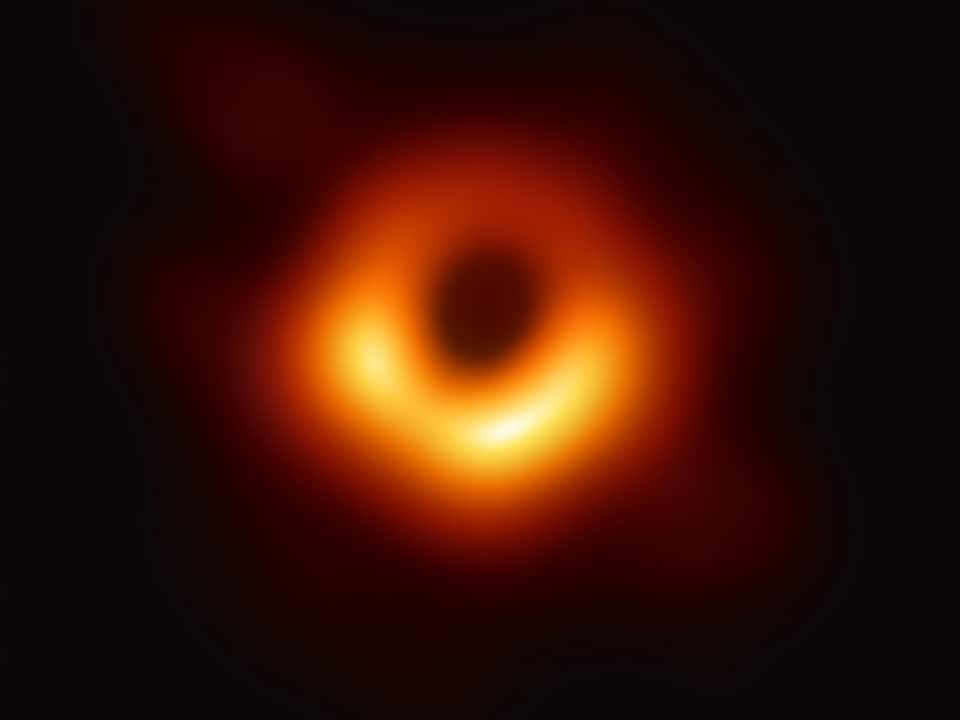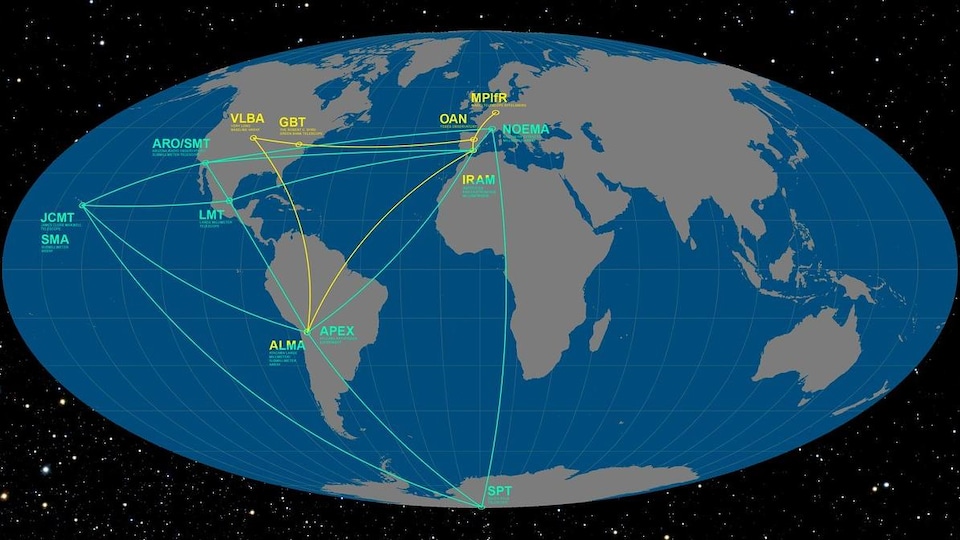As early as 1974, astrophysicists had detected a compact and brilliant radio source in the center of the Milky Way. It was not until the 1990s, however, that this source was associated with the presence of a supermassive black hole, those regions of space where the gravitational field is so intense that it prevents any form of matter or radiation. to escape it.
But how to confirm the presence and create an image of a celestial object that does not emit light? This is the task that the 350 astrophysicists associated with the EHT have been focusing on since a first observation campaign carried out in 2017 using the eight terrestrial telescopes located around the world and which form the virtual equivalent of a radio telescope several thousand kilometers in diameter.
The objective of these scientists was to image the silhouette of a black hole caused by the curvature of light subjected to the extreme gravity of the celestial object. The first results were announced in 2019. At the time, the image of the black hole at the center of the galaxy Messier 87 was presented, some 55.3 million light years from Earth.
By comparison, Sagittarius A* (Sgr A*) is at only
27,000 light years from our planet. Sgr A* is 100 times closer to our planet than any other supermassive black hole.
Its relative proximity did not make it easier to observe. The presence of interstellar dust and gas, several million stars and visible light from Earth make the central region of the galaxy difficult to contemplate. We must also consider the fact that we are inside the galaxy. It’s always a challenge to observe things when you’re inside things themselves.
explains astrophysicist Olivier Hernandez, director of the Rio Tinto Alcan Planetarium.
The silhouette of Sgr A*
The image that the astrophysicists managed to capture therefore corresponds to the outline of Sgr A*, what is called the event horizon. This region marks the immaterial limit of entry into the black hole. What we can see is the accretion disk, i.e. the gas which is heated and which begins to fall towards the black hole
says Olivier Hernandez.
The radius of the event horizon that corresponds to this mass would be about 6 million kilometers, or about 15 times the Earth-Moon distance.
This outline of the black hole is considered one of the most violent places in the universe, and the point of no return beyond which everything – i.e. stars, planets, gas, dust and all forms of electromagnetic radiation, including light, would be irreversibly sucked out.
Landmarks
- The Milky Way is a spiral galaxy made up of more than 100 billion stars, dust and interstellar gas.
- As a whole, it measures about 106,000 light-years in diameter.
- In the center is a shiny nucleus, called a bulge, from which spring spiral arms that form a huge flattened disc.
- Our Sun is located on one of its spiral arms and rotates around the galactic center every 240 million years.
- Sgr A* is more than 4 million times more massive than the Sun.
Sgr A* is not the only black hole in the Milky Way. There are dozens of stellar black holes. The latter are formed during the gravitational collapse of massive stars at the end of their life which explode as supernovae. To date, 20 such black holes have been confirmed in our galaxy.
A mystery that remains
Despite this important galactic breakthrough, black holes remain very mysterious celestial objects. Where does the material they absorb go? How to define their gravitational singularity? What’s on the other side?
So many unanswered questions that science can continue to focus on in the coming years.
Since the first series of observations carried out in 2017, three observatories have been added to the EHT network and others will join in the coming years.
Reference-ici.radio-canada.ca

